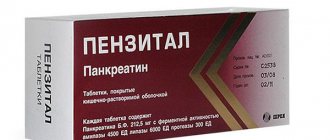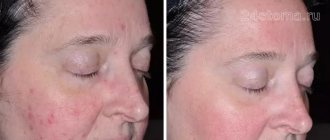The shock-absorbing function is possible due to the presence of empty space under the foot, formed by the transverse and longitudinal arches. As a result, the foot springs, since it does not touch the ground and floor with the entire surface, but only with support points.
But sometimes the arches drop, causing the foot to sag and spread out. This deformity is called flat feet.
It should be noted that children of preschool age are not diagnosed with “flat feet”, since in children the foot, due to incomplete formation, always has some signs of flattening.
Types of pathology
There are congenital (extremely rare) and acquired flat feet.
According to another classification, flat feet can be:
- longitudinal – the longitudinal arch is flattened, as a result of which the foot lengthens;
- transverse – the transverse arch is smoothed out, causing the foot to become wider;
- combined, or longitudinal-transverse - both arches are violated.
Depending on the cause of the pathological changes, flatfoot is classified into static (observed in 82% of cases), rachitic, paralytic, and traumatic.
Massage for transverse flat feet
With the help of massage, you can get rid of symptoms of transverse flat feet such as pain, swelling of the feet and inflammation. In addition, it helps speed up lymph flow, improve blood flow, and tone muscles. The positive effect of massage can only be obtained if it is done regularly, that is, 12–15 minutes, 15 sessions per month.
Before starting the procedure, it is best to steam your feet in a bath with the addition of herbal infusion or sea salt.
Massage for transverse flat feet is done as follows:
- Warm up the skin on the legs and feet by stroking and rubbing.
- Using kneading, squeezing and tapping techniques, massage the calf muscles.
- Massage the soles of your feet thoroughly.
- Work the thumbs of the lower extremities.
This massage has a positive effect on biologically active points and allows you to get rid of transverse flat feet.
We recommend
Laser aesthetic cosmetology: perfect technology for an ideal appearance Read more
Causes of the disease
Various factors can cause foot deformation:
- injuries (foot or ankle fracture, damage to the arch of the foot);
- paralysis of the muscles of the foot, which can develop after polio;
- rickets – bones become soft and pliable, causing them to become deformed under the weight of the body;
- weakening of the muscular-ligamentous apparatus, as a result of which it cannot maintain the arch in the desired position.
The cause of weakness may be:
- congenital anomalies;
- insufficient physical activity, sedentary lifestyle;
- age-related changes;
- improperly selected shoes (narrow toes, high heels);
- excessive stress on the foot due to excess body weight, pregnancy or professional activity (hairdressers, salesmen).
Symptoms
Most often, the patient does not experience any sensations, only a certain disturbance in gait, which can be noted by others or the doctor. The main symptom is ankle pain, which may increase with exercise. There may also be swelling in the ankle area. Symptoms can vary and usually depend on the severity of flat feet. Some people have uneven distribution of body weight and the person may notice that the heel of the shoe wears out faster on one side than the other. The most common symptoms of flat feet are:
- Pain in the ankle area (inside), there may also be swelling there
- Pain in the foot area
- Pain in the arch of the foot
- Calf pain
- Knee pain
- Pain in the hip area.
- Back pain
- Patients with flat feet may also experience stiffness in one or both legs.
- One or both feet can be placed flat on the ground.
- Uneven shoe wear.
Stages of flat feet
In its development, the disease goes through several stages:
- pre-disease;
- intermittent flat feet;
- first, second and third degrees of severity.
At the pre-disease stage, the foot retains its shape, but if it is necessary to walk or stand for a long time, it begins to hurt.
At the stage of intermittent flatfoot, the foot becomes deformed under load, but after rest it restores its previous shape.
With the first degree of flatfoot, a slight deformation of the foot becomes noticeable (the height of the arch is more than 25 millimeters), and the gait changes. Possible pain, rapid fatigue, swelling.
In the second degree, the height of the arch is less than 18 millimeters. A person constantly experiences pain in the feet, which can spread to the knee. Walking becomes significantly more difficult.
In the third degree, the foot is severely deformed and the arch almost completely disappears. A feeling of pain accompanies even short-term walking. The feet and legs become very swollen. Pain in the lower back and headaches are possible.
Diagnostics
People who have flat feet may not experience any symptoms and do not need to see a podiatrist. However, if there are certain signs, such as a visually flat foot, pain in the feet, ankles or lower extremities, a feeling of tension in the legs, heaviness in the legs, especially after exercise, then it is necessary to consult an orthopedic doctor.
Diagnosing flat feet is not difficult for a qualified doctor, who can make such a diagnosis based on an examination of the patient. The doctor will evaluate the person’s gait, the position of the foot to the surface, and evaluate the functional state of each leg.
In some cases, the doctor may prescribe an x-ray, CT scan or MRI, especially if it is necessary to determine the genesis of flat feet. Podography also gives a good result, which allows you to assess the degree of flatfoot .
Possible complications
Due to the loss of shock-absorbing capacity, the supporting apparatus experiences shocks during walking, which are transmitted up the skeleton, reaching the brain.
As a result, various complications may arise:
- change and heavier gait (clubfoot);
- poor posture;
- pain in the feet and knees;
- foot pathologies (heel spurs, corns, hallux valgus, ingrown toenail);
- pathologies of the knee joints (looseness, inflammation of the menisci, arthrosis);
- pathologies of the hip joints (coxarthrosis);
- diseases of the spine (radiculitis, scoliosis, osteochondrosis, intervertebral hernia);
- phlebeurysm;
- headache.
What happens if flat feet are not treated?
With an advanced degree of longitudinal flatfoot, the inner side of the ankle is deformed and the foot is bent in a valgus manner. As a result, the talus bone is overloaded, which causes osteoarthritis.
With the transverse type, the load falls on the forefoot, so osteoarthrosis of the metatarsophalangeal bones develops. On the plantar side, the skin becomes rough in the corresponding parts. The plantar aponeurosis contracts, which leads to limited flexion and extension of the fingers (contracture). The second and third fingers become hammer-shaped. Because of this, the contact of the fingers with the surface of the shoe increases, and calluses appear.
Severe clubfoot, herniated discs, headaches, heel spurs and varicose veins are also observed.
Can flat feet be treated with insoles?
Flat feet in the initial stages, without accompanying foot deformities and without arthrosis of the joints, can be cured with the help of insoles or orthopedic shoes. Insoles should only be made to order for a specific person. They are worn at least 5-6 hours a day. The course of treatment lasts from 2 to 4 years or more. The desired result is achieved in 60% of patients. The rest show improvement, but the disease is not completely cured.
Important conditions for the effectiveness of insoles:
- ideal conformity to the topography of the plantar surface of the foot;
- the absence of areas of increased pressure on the foot, which over time can lead to structural changes in soft tissue structures;
- creating conditions for training the muscles of the arch when walking.
Custom insoles affect the degree of muscle tension, joint position, and tendon tension. They also have an effect on proprioceptive sensitivity and contribute to better control of the dynamics of the human body. Good insoles not only relieve symptoms and correct foot deformities, but also improve posture and form a correct gait.
Principles of treatment
Many people do not pay attention to flat feet and ignore the first symptoms. In fact, this is a rather serious and rapidly developing pathology that is practically untreatable. It can be completely cured only in childhood, when the foot is not yet fully formed. In adults, therapy is aimed at slowing the development of the disease and preventing complications. Treatment of the pathological process is complex. The patient's muscles are strengthened, pain is eliminated, and progressive longitudinal/transverse flatfoot is stopped. The symptoms and treatment of these types of disease are practically the same. Now let's look in more detail at modern methods of therapy.
Medicines in combination with physical therapy help eliminate pain. Patients are prescribed systemic analgesics (Ibuprofen, Aspirin), as well as ointments for topical use (Dolgit, Voltaren).
The basis of therapy is therapeutic exercises. A set of exercises is selected by an orthopedist taking into account the stage of the disease and the patient’s age. A foot massage has a good healing effect. Regular procedures help normalize blood circulation and increase muscle tone. Unfortunately, all of the above treatment methods are effective only at the initial stage of the disease. For severe foot deformities, only one option helps - surgery.
Treatment of this disease in children requires a different approach. Most often, young patients are diagnosed with longitudinal flatfoot (all parents should know that such deformity cannot be ignored). The pathology is highly treatable if detected early. The child's bones, ligaments and muscles are susceptible to conservative therapy. Exercise therapy and massage have a positive therapeutic effect. If a child has congenital flat feet, they begin to be treated from the very first days of life. For this purpose, special bandages and splints are used.
Treatment of transverse flatfoot at home
To treat transverse flatfoot at home, as well as eliminate its symptoms, folk remedies in the form of decoctions and tinctures are also used.
With their help, you can get rid of pain and restore muscle ligaments after overexertion. Traditional methods give maximum effect if they are used in complex treatment.
- If a patient suffers from aching joints, wormwood will come to the rescue. It must be washed, placed on the feet and wrapped with a warm cloth.
- A mixture prepared from iodine and citric acid (in a 1:1 ratio) will help cope with the symptoms of transverse flatfoot:
- mix the resulting solution well and add aspirin (two tablets);
- apply to the problem joint and wrap it with warm material;
- Only 3% iodine should be used, no more, otherwise you may get a skin burn.
This procedure must be carried out for three days, after which you should take a break for a week.
To relieve pain and relax the muscles on the feet, it is recommended to regularly use baths with the addition of sea salt or herbal lotions:
- Pour 1 liter of warm water into a basin, add sea salt (1 tbsp), mix well and immerse your feet in it. The duration of the procedure is 10–20 minutes.
- Instead of salt, you can add an infusion made from linden, chamomile, mint, oak bark or sage to the water.
- After completing the procedure, the feet should be thoroughly dried and massaged, applying the cream intended for this purpose.
To increase muscle tone, as well as hardening, baths or contrast showers are required. You can take two containers, pour hot water into one and cold water into the other. Next, the feet are placed in them one by one, which allows you to increase the tone of the muscles and the whole body, as well as improve blood flow.
As for the contrast shower, the mixer lever switches from cold to hot water and back about 3-7 times.
This procedure has a contraindication that applies to the fair sex. They should avoid contrast showers during menstruation.
If transverse flatfoot is in an advanced state, and no massages, lotions or rest help cope with the pain, you should turn to drug treatment:
- Analgesics (aspirin, paracetamol, Flugalin, Indomethacin and Ibuprofen) will help relieve acute manifestations of the disease.
- Ointments (indomethacin, Dolgit, Voltaren gel) can also help get rid of pain.
flat foot
flat foot
- static – due to prolonged standing;
- rachitic – a consequence of previous rickets (develops due to a disorder of calcium metabolism, mainly caused by a lack of vitamin D);
- paralytic - the result of damage to peripheral nerves or diseases of the central nervous system;
- traumatic – the result of a foot injury (damage to bones, joints, muscles, tendons).
The most common type is static flatfoot. Its symptoms depend on the stage of the pathology:
- Stage 1 – patients complain of pain and fatigue of the calf muscles of the legs, which appear only after a long walk;
- 2nd degree – pain with minimal loads, the first signs of foot deformation;
- 3rd degree – severe deformation of the foot and its expansion.
Static flat feet are the result of constant overload of the feet. It leads to weakened muscles and sprained ligaments. It usually develops in people who stand for a long time, lift and carry heavy objects.
Patient Questions
Is it possible to play sports with flat feet?
Yes, it is possible, but the training program must be compiled individually.
Do they take people with flat feet into the army?
Mild stages are not a contraindication for military service. But such people will be shown service in the army, where the statistical load categories are lower than “A - B3”. If we talk about the type of flat feet people are not allowed into the army, then this is stage 3-4, when the foot completely touches the floor surface.
FOUR FACTS ABOUT FLAT FOOT
1. The patient may not know that he has flat feet.
In adults, mild degrees have almost no effect on well-being. Rare leg pain occurs only after long walks. 2. Pathologies of the structure of the foot can develop with age. That’s why the confident phrase “Everything was great when I was a child!” - not an argument for an orthopedist who knows how to identify flat feet in adults and clearly sees all its signs and consequences.
3. Feet are our support and shock absorption when walking. Every day a person takes thousands of steps, and this load should not affect the condition of the spine and large joints.
4. Flat feet in adults can be cured! The misconception that feet can only be corrected in childhood is debunked by modern medicine. The latest techniques allow you to maximally correct flat feet at any age!
"Doctor Ost" boldly undertakes the treatment of flat feet in adult patients. Invaluable experience and rich equipment of the clinic with advanced treatment technologies help to achieve results.
Prevention of disease in children and adults
To prevent the development of flat feet, it should be periodically prevented. First of all, doctors recommend paying attention to shoes. Today, in almost every store you can buy special orthopedic shoes and insoles. The range of similar children's products is amazing in its diversity. Do not forget that shoes and insoles cannot correct foot deformation. They only prevent its development.
To strengthen muscles, it is useful to do contrast baths. It is necessary to alternately dip your feet in basins with cold and hot water. In addition, regular consumption of vitamins in their natural form (A, E, C, D) and microelements (including copper, selenium, calcium) helps strengthen muscles.
Prevention of flat feet in children can begin with increasing physical activity. Martial arts, skiing and horse riding are considered beneficial. In summer you can walk barefoot on mown grass and pebbles. Such daily walks have a positive effect on the motor skills of the small muscles of the foot.









